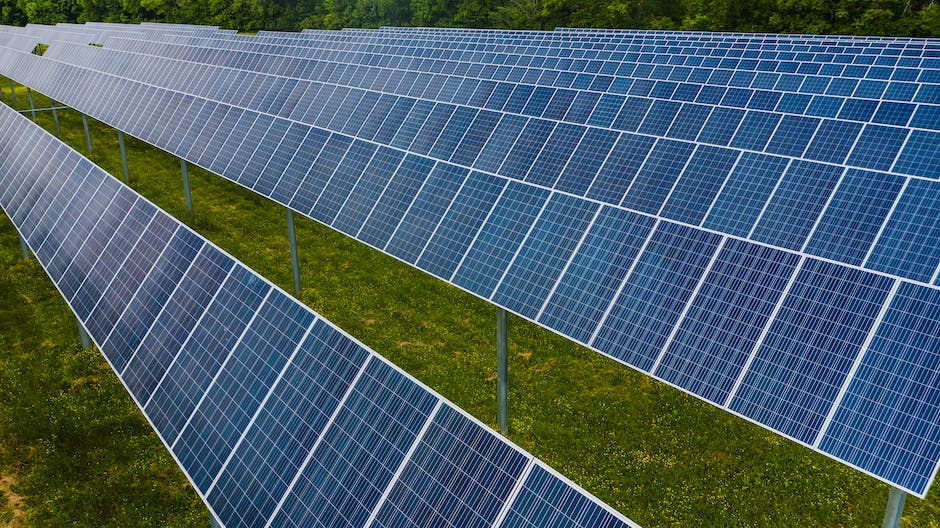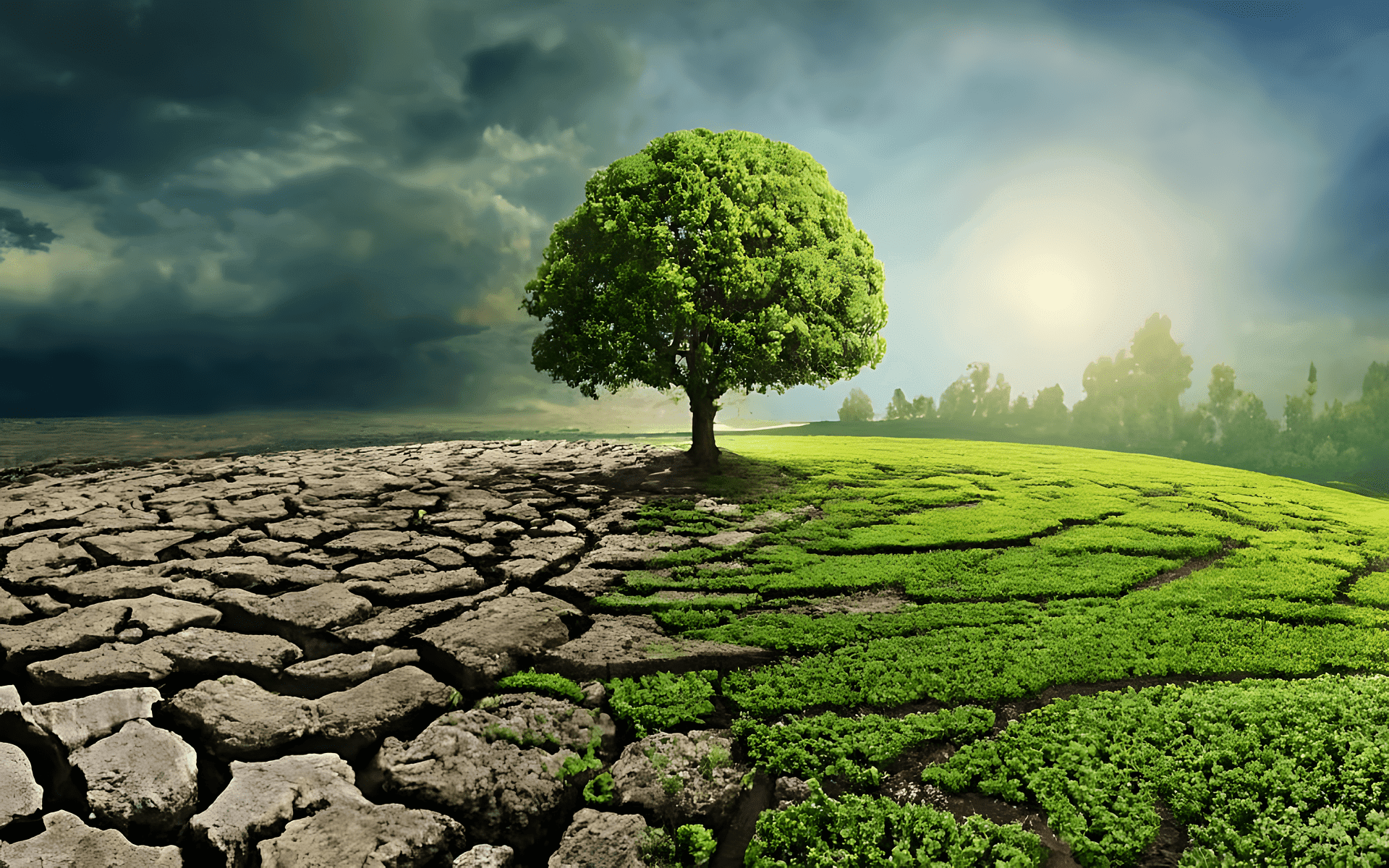As stewards of our planet, we are facing unprecedented environmental challenges in the 21st century. The escalating threats of climate change, biodiversity loss, and environmental pollution demand our urgent attention. With every ticking second, our landscapes are transforming, our ecosystems are reeling, and species disappear, marking a disconcerting departure from the ecological balance that once was. Yet, these challenges also ignite opportunities for historic shifts in our approaches to policy-making, technology, and conservation. This document will explore these intricate topics, shedding light on the intricate dynamics of our changing environment and our role within it.
Climate Change Impact
Climate change, the long-term alteration in Earth’s weather patterns and average temperatures, stands at the forefront of our planet’s current challenges. It is an ongoing phenomenon, deeply rooted within anthropogenic practices, and is dramatically reshaping our planet’s ecosystem. Its impact is pervasive and unignorable as it drastically revolutionizes complex planet-wide systems biochemical patterns, and intricate hydrological cycles. Foremost in this revolution are the changes in biodiversity – the variety of life within an ecosystem.

Global warming, one of the main drivers of climate change, is leading to alterations in habitat conditions. Terrestrial species are shifting their geographical ranges, seasonal activities, migration patterns, abundances, and species interactions in response to climate change. There is a palpable shift toward the poles and higher altitudes as species strive to adapt to warmer temperatures, consequently bringing new combinations of species together and altering community structures.
An aspect of climate change that is less appreciated but fundamentally altering ecosystem dynamics is ocean acidification. The influx of excessive carbon dioxide in the atmosphere is absorbed substantially by our oceans, leading to a decrease in water pH. This drop in pH has a considerable influence on marine life, specifically calcifying species such as shellfish, coral reefs, and a wide variety of plankton organisms. The difficulties faced by these vital species will inevitably cascade up the food chain, destabilizing entire marine ecosystems.
Parallel to alterations in biodiversity, climate change is setting in motion significant shifts in ecosystem processes. The immediate implication of this has been a pronounced influence on biogeochemical cycles, primarily carbon and nitrogen cycles. Elevated CO2 levels in tandem with increased temperatures affect the rate of photosynthesis, respiration, decay, and the growth responses of plants, troubling the equilibrium of these cycles.

Furthermore, hydrological cycles, fundamentally connected to nearly all environmental factors, are experiencing shifts leading to an increase in severe weather events such as droughts, floods, and violent storms. The irregularity and extremities of these events are reshaping the landscapes and aquatic ecosystems resulting in dire and probably irreversible modifications in ecosystem structure and function.
Interestingly, the onset of climate change has emphasized the subtler aspects of ecosystems that were once obfuscated – the mutualistic relationships and intricate interconnections. This reiteration of the understanding of hitherto unappreciated facets demonstrates our ecosystem’s adaptability.
Nevertheless, it is crucial to comprehend that this revolution brought forth by climate change is not about optimizing new life forms; it is evidence and result of a disruption brought upon by anthropogenic practices. Thus, while certain species may temporarily flourish under altered conditions, the overall demonstrable impact of climate change on ecosystems is not benevolent.
In sum, the effects of ongoing climate change on our ecosystem are comprehensive and consequential. It might not align with the traditional view of revolution as something desirable, but it serves as a stark reminder of our responsibilities toward the planet. With each transformation in the ecosystem, we are reminded of the inevitable force of nature and the necessity of sustainability that should guide all anthropogenic activities from here on.
The real revolution commences when we understand these changes and integrate them into our decisions, actions, and lifestyles. This discourse invites readers to ponder the venerated complexity and dynamism of our ecosystem, facilitating a keener understanding of the same. A thorough grasp of these changes catalyzes a fitting response to them and encourages forced, yet vital, evolution in human behavior and practices posed by the climate crisis.
The prime revolution, then, is how this ecological shift necessitates radical transformation in human understanding, attitude, and above all, action regarding sustainability. It is our hope that this article acts as a humble initiation point in that very revolution.
Climate Change Due to Biodiversity Loss and Conservation
Biodiversity – the variation of life forms within a given ecosystem, biome, or for the entire Earth – is not simply a delicate wonder of nature, but a vital underpinning of human livelihood and survival. Yet, alarmingly, scientific research signals that Earth is encountering a biological annihilation, a mass extinction event chiefly driven by anthropogenic climate change and habitat destruction. The repercussions of such biodiversity loss extend far beyond the mere extinguishing of species, fundamentally undermining ecosystem stability, productivity, and resilience.

Ecosystems require a diversity of species to maintain functionality. A decrease in biodiversity compromises ecological processes such as pollination, seed dispersal, nutrient cycling, and pest and disease control. Reduced biodiversity exerts stress on ecosystems, making them more susceptible to environmental changes and less resilient, hindering their ability to recover from disturbances such as fires or invasive species. Consequently, ecosystem services that human societies depend upon, such as clean water, air and soil, food crops, and medicinal resources, face potential disruption or even us.
In addition, tangible economic repercussions arise from biodiversity loss. The global economy, particularly sectors like agriculture, fisheries, and forestry, is highly dependent on biodiversity. The cascading effects of species loss could thus lead to significant economic instability.
Addressing these devastating implications requires urgent and cohesive responses. Conservation efforts must move from fragmented, species-centered approaches to strategies prioritizing ecosystem health and resilience. Expanding protected areas, restoring degraded ecosystems, and promoting buffer zones around protected areas are potential interventions that could stem biodiversity loss.
The role of technology cannot be underplayed. Integrating technologies such as satellite imagery, drones, and Artificial Intelligence for real-time tracking of biodiversity dynamics can significantly bolster conservation strategies.
Simultaneously, sustainable development initiatives must be escalated. On a societal level, this involves the fostering of a more sustainable lifestyle, reducing waste and consumption patterns, and transitioning to renewable and less invasive forms of energy.
Policy changes are also paramount. Environmental regulations need to be enforced more stringently, with incentives for businesses to adopt green practices. The international community must strengthen cooperative efforts, committing to global treaties and funding for biodiversity conservation and climate change mitigation.
Finally, education and awareness are vital. A radical shift in the public consciousness is needed, fostering an appreciation for the interconnectedness of life and the essential role conservation plays in human survival. Engaging community involvement in local conservation projects and integrating environmental education into school curriculums can foster a new generation more attuned to environmental responsibility.
Biodiversity loss is a crisis of unprecedented magnitude, propelling us into uncharted ecological territories. Addressing this issue is not simply about saving obscure, distant species; it is about preserving the intricate biological webs that support all life on Earth, including our own. As daunting as this challenge may appear, every effort, every step taken towards preservation, brings us closer to a future where humans and nature thrive symbiotically.
Environmental Policy Developments
In critically examining the contemporary environmental discourse, it is evident that environmental policies are progressively evolving. One must not fail to acknowledge the intricate correlation between such policies and the broader global response to environmental crises. To understand how this relationship is shaping the ever-changing narrative on environmental protection and sustainable development, it is vital to unpack newly emerging trends and dynamics.

One key dynamic is how evidence-based policies are strengthening the adaptive capacity of individuals, communities, and countries to environmental shifts, notably concerning climatic events. Policymakers are increasingly utilizing modern technology to accurately predict and plan for such potential hazards. Applications of satellite imagery in monitoring weather patterns, GIS technology in hazard identification, and big data analytics in risk analysis are pushing the boundaries of possible responses to environmental crises.
Parallelly, the increased emphasis on renewable energy sources in environmental policies has fostered a revolutionary shift towards decarbonizing the global economy. Policies advocating for renewable alternatives to fossil fuels are gradually transforming energy markets, with far-reaching implications for greenhouse gas emissions and thus, global warming. This evolution in energy policies is shaping the global response to climate change by steering economies away from carbon-intensive development pathways.
In recognizing the urgency of biodiversity conservation, environmental policies are also redefining approaches to natural resources management. The Convention on Biological Diversity, for instance, is driving international cooperation for biodiversity conservation and sustainable utilization of biodiversity components. New policy trends, such as incorporating indigenous knowledge, enhancing protected area networks, and promoting in-situ and ex-situ conservation methods, are shifting the paradigm from a purely utilitarian approach to a more balanced, ecologically sound approach.
Furthermore, environmental policies are progressively striving towards integrating mitigation and adaptation strategies with socio-economic development objectives. This nexus approach promotes a balance between ecological protection and human development while mitigating the adverse effects of environmental crises. Suitably, policies fostering green innovations, supporting circular economy practices, promoting sustainable agriculture practices, and incorporating ecological considerations into infrastructure planning are remolding developmental models.
Correspondingly, international legal instruments are progressively adopting a human rights-based approach to environmental protection. Environmental policies focusing on access to information, active participation in decision-making, and access to justice in environmental matters are shaping the global response by empowering citizen action towards environmental protection.
Notably, emerging policy trends reflect a robust understanding of the intrinsic relationship between environmental quality and human well-being. This holistic perspective fashioned by the intersection of environmental law, sociology, anthropology, and public health is progressively reorienting the global response towards environmental crises.
In conclusion, evolving environmental policies are critically shaping the global response to environmental crises. By amplifying scientific understanding and fostering international cooperation, these ever-progressing policy trends are pivotal in navigating the road to a sustainable planet.
Sustainable Technologies and Innovations
Sustainable technologies and innovations hold a paramount place in the pursuit of environmental conservation. They translate to practical means for individuals, societies, and nations to gradually transition away from practices that exacerbate anthropogenic climate change and biodiversity loss. The opportunity to discuss their role sets the stage for a compelling exploration of humankind’s capacity to devise strategies aimed at preserving and restoring the environment.

At the forefront, renewable energy technologies embody the pivotal role sustainable innovations play in mitigating climate change. Solar panels, wind turbines, hydroelectric and tidal power, geothermal energy, and modern bioenergy collectively offer alternatives to fossil fuels. These technologies, by their very nature, release negligible greenhouse gas emissions, promising a plausible path to decarbonizing our energy sector – a major contributor to anthropogenic climate change.
On another note, the world of green construction presents an entrancing foray into sustainability. With materials like bamboo – a renewable and impressively sturdy resource, low-impact buildings can be assembled that sit gently on the planet. Additionally, advancements in insulation technologies substantially reduce energy needs, whilst efficient heating, ventilation, and air conditioning systems help maintain comfortable indoor environments without gratuitous energy consumption.
In the sphere of transport, electric vehicles (EVs) are making waves. By shifting away from internal combustion engines, EVs offer a promising alternative that sidesteps carbon dioxide emissions, offering a tangible way of mitigating climate change. Hydrogen fuel cells, biofuel technology, and advancements in public transport systems further contribute to reducing the carbon footprint of the transport sector.
When turning the attention towards hydrological cycles and water conservation, technologies such as rainwater harvesting systems or efficient irrigation methodologies capitalize on conserving this vital resource while helping to mitigate the effects of severe weather events. For the looming specter of ocean acidification, innovations such as carbon capture and storage (CCS) can play a promising role.
Moreover, technology guides biodiversity conservation efforts. Remote sensing technologies, satellite imaging, and Geographic Information Systems (GIS) enhance our understanding of ecosystems and allow the efficient mapping and monitoring of biodiversity. This data facilitates policymaking and enables actionable and comprehensive conservation strategies.
Crucially, technologies cannot be decoupled from sociopolitical contexts. Integrative approaches ensure the benefits of technology reach the hands of the many, not the few. Public participation in decision-making, women’s empowerment, and respect for Indigenous rights must interweave with the narrative of sustainable technologies, forming an indispensable tapestry of globally diverse, contextually valid, and ethically respectful solutions to environmental crises.
This reveals the role of sustainable technologies as more than just catalysts of change. They are instrumental in painting a more comprehensive picture of environmental conservation, encouraging a reimagining of the way humankind interacts with and respects the planet. It is a broad and exciting canvas that reaches far beyond scientific advancements, extending to an unprecedented transformation in our sociopolitical structures and individual behaviors. The potential held by sustainable technologies and innovations, therefore, is profound. Advancing them with passion and urgency is a task the world must rise to in unity.
Conclusion
Addressing the numerous environmental issues that plague our planet is an endeavor requiring the collective effort of all global citizens. We have observed the consequences of policies, both effective and ineffective, seen the blistering pace of biodiversity loss, and witnessed the transformative effects of climate change on our ecosystems. Yet there is a glimmer of hope, embodied by innovative and sustainable technologies. As we surge into the future, these technologies continue to evolve and offer us both challenges and solutions. As we strive to create a sustainable planet, it is our responsibility to keep abreast of these developments, understand their implications, and harness them for the preservation of our home: Earth.

Hi, I’m Nathan Cross, a writer and avid reader who loves crafting articles for newspapers and online platforms. Words are my passion, whether I’m telling stories, sharing insights, or sparking conversations. When I’m not writing, you’ll find me lost in a book or out on the baseball field, enjoying the game that keeps me grounded. Writing, reading, and baseball—these are the things that define me.




